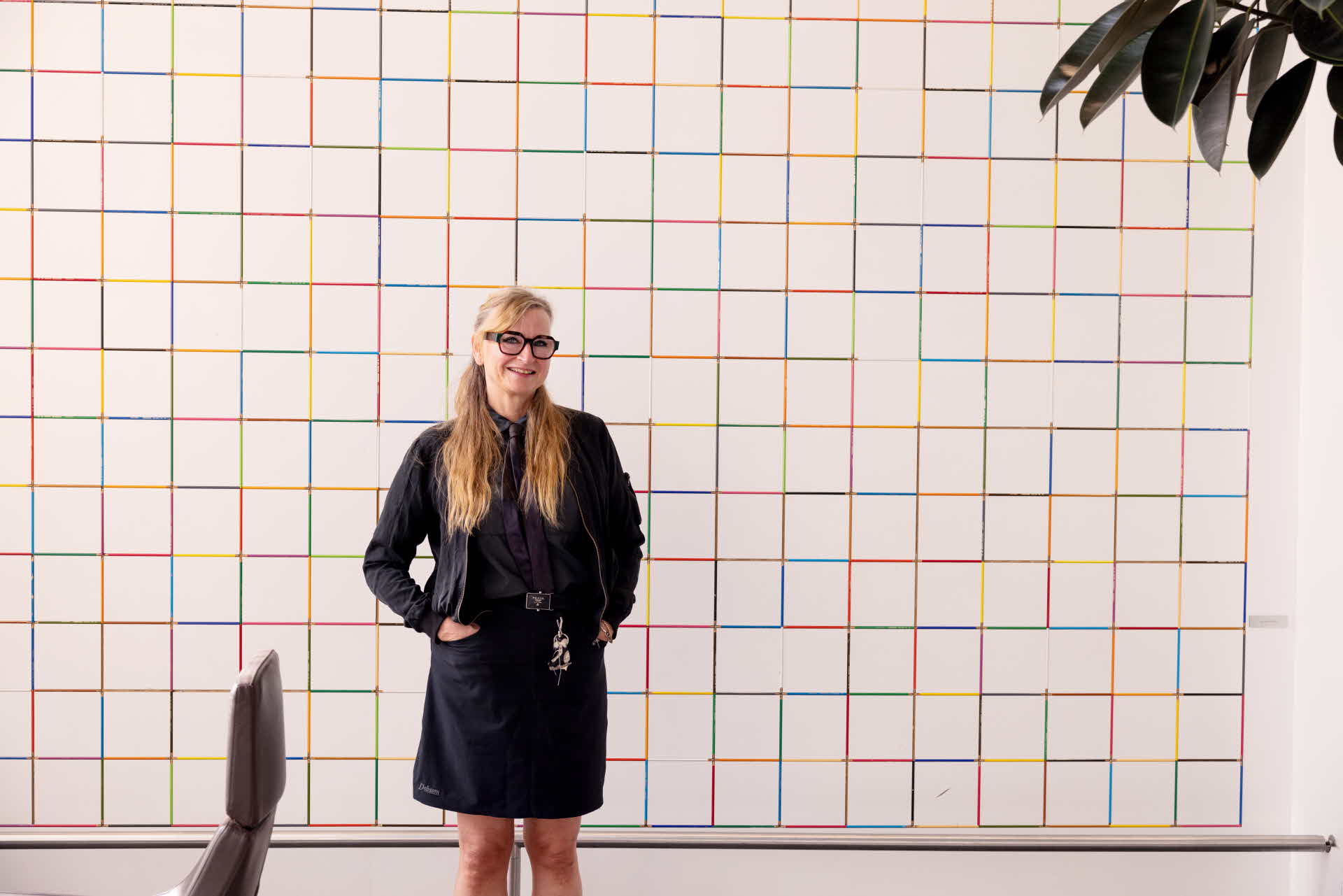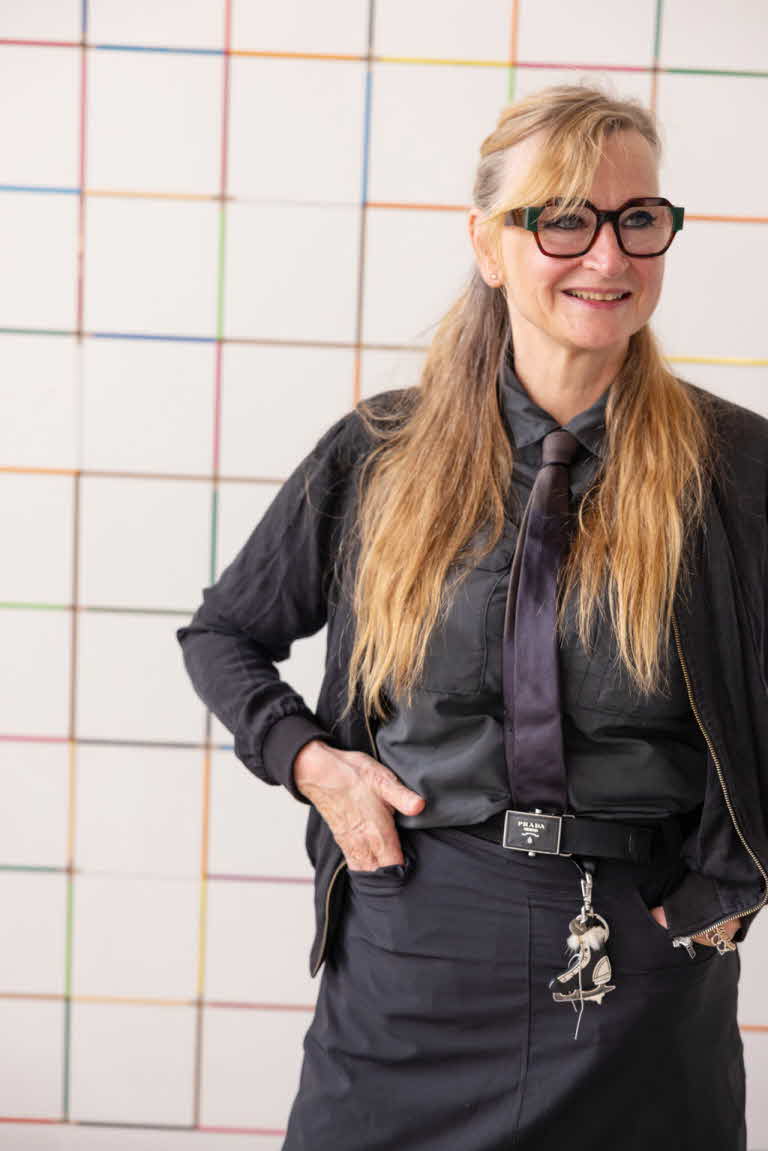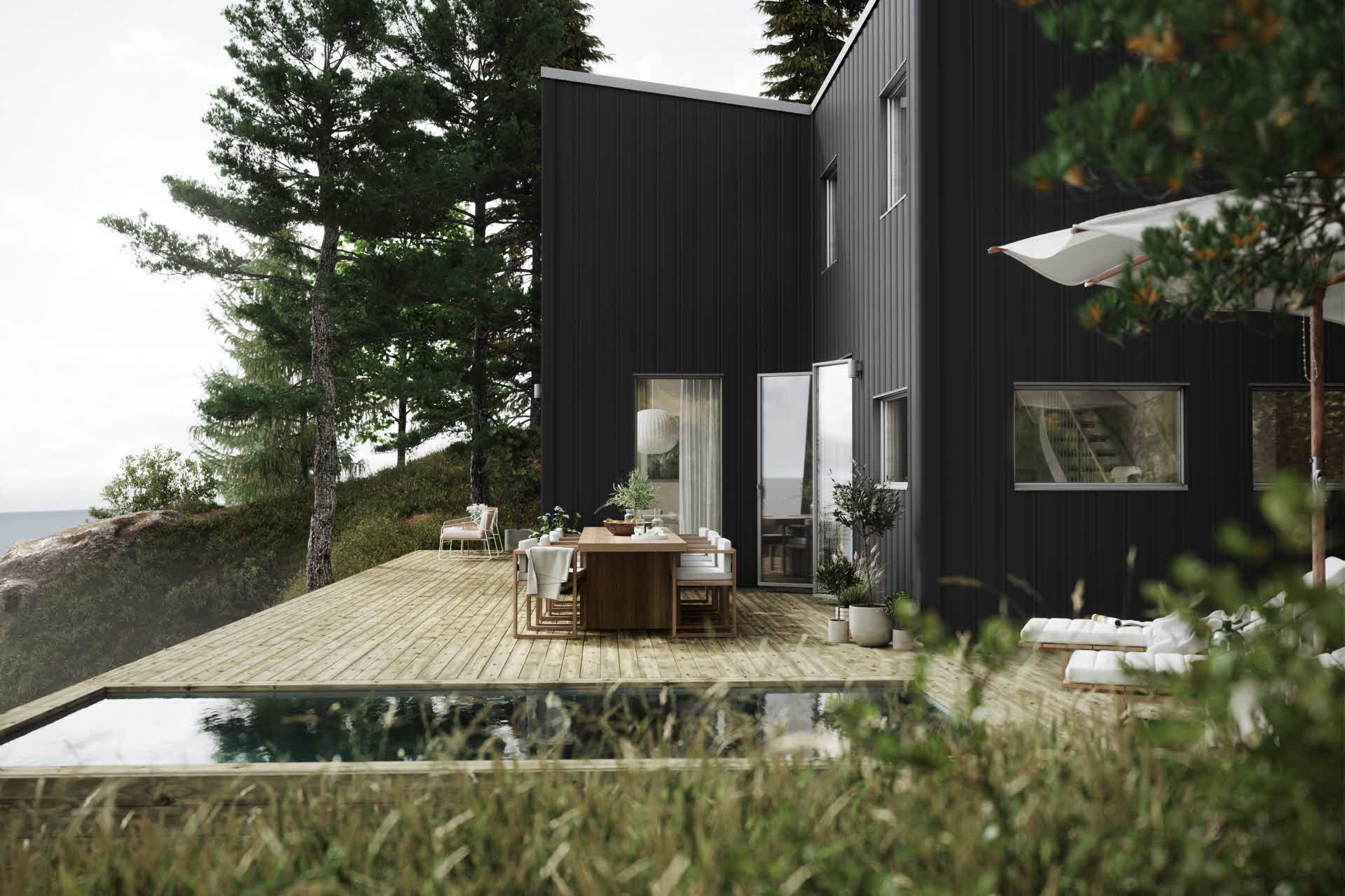
- INSPIRATION
- INSPIRATION CLADDING
- CAMILLA SCHLYTER
Designing for circularity
- Article
For the architect Camilla Schlyter, the main focus is on designing for circularity. Together with SCA, Camilla has developed a sustainable, innovative cladding that enables a wide range of design expressions. 'There are no limitations with this cladding,' says Camilla.
With the construction industry undergoing significant changes, where increasing focus is placed on the green transition, Camilla also sees a shift in the architecture field. More and more, the profession is moving toward designing for circular and sustainable buildings. The EU policy New European Bauhaus (NEB), for instance, sets guidelines to promote sustainable solutions to transform the construction industry. Camilla believes this places demands on the industry, with architecture being a central part of that transformation.

"I often find inspiration in traditional wooden buildings. In the past, everything was reused, both to make the most of resources and as part of the design expression. I think we can learn a lot from how things were built back then," says Camilla.
Camilla envisions a future where the industry increasingly focuses on renovation and adaptability in existing buildings, with wood being an ideal material to work with. To collectively achieve the goals of the green transition, she believes it will become essential to make use of what already exists, rather than only building new structures.
"For that type of project, wood is an excellent choice because it is adaptable in both form and dimensions," Camilla explains.
"The exterior cladding is the part of the house we interact with, making it an important element in building the home's identity. Today, we see more and more spectacular architecture taking the spotlight. However, I'm more inclined toward renovating existing buildings and taking a gentle approach to details and adapting to different environments," says Camilla.
Valuable Insights When Professions Collaborate
Camilla believes that collaboration between different professions can bring valuable insights. The process of developing SCA Lynx's innovative cladding was a perfect example of this, where the expertise from professionals in sawn timber, combined with Camilla's architectural knowledge, resulted in a sustainable product that met the design criteria.
"By being attentive to everyone's expertise, I was able to create design criteria for the product based on the wood's properties, encompassing everything from timber characteristics to manufacturing and design," Camilla explains.
Lynx's innovative cladding come in several profiles, offering great variety. The wide range of possibilities means that only the imagination sets the limits for how the panels can be used to create playful impressions.
"When we developed the cladding, it was incredibly important to me that it offered great variety and never looked the same. This panel changes hour by hour, adding intriguing dimensions to buildings."
A major focus in the design of this innovative cladding was to create maximum impact with minimal planing, to use the raw material in a responsible way.
'It has been incredibly fun and educational to work with SCA. It has given me a deeper understanding of wood as a material and the various qualities it can offer,' says Camilla.
Architecture and Wood
In her work as an architect, Camilla always starts by considering the project requirements, the client, and the budget, in order to determine the possible design expressions. She emphasizes that the budget is a crucial aspect for architects, enabling the realization of the various parts of the project by taking a holistic approach. Camilla also leans heavily on research.
'When I create something, I want to advance knowledge and stay up to date, both for my sake and for the client's. Through research, I can continuously rely on support for designing with circularity in mind,' Camilla explains.
Camilla sees a shift in the role of the architect. She highlights that in modern construction projects, suppliers, industries, and the construction sector act as co-designers. This gives architects an increasing focus on shaping designs through close collaboration and discussions with partners, developing a design language based on shared knowledge and project conditions.
'I see a growing interest in the green transition, especially among young architects, and I believe they will play a key role in that transition,' says Camilla.
She also points out that designing for circularity will place greater demands on wood quality, and thus, questions of forestry and architecture will increasingly go hand in hand.
'Today, the quality of wood is becoming more important for both new construction and renovations. Therefore, I believe that collaborations, like the one I had with SCA, will be critical, as both parties have significant responsibilities in the green transition,' Camilla concludes
Related content

SCA Lynx innovative cladding
In collaboration with the architect Camilla Schlyter, we have developed innovative panels that create fascinating shadow effects when sunlight falls on them.

Fjället Cabin
Among streams, birches, and stones, a beautiful wood-clad house emerges. Together with nature, Sophie Odelberg and her partner Gustav have created a place for peace and relaxation in the mountains.